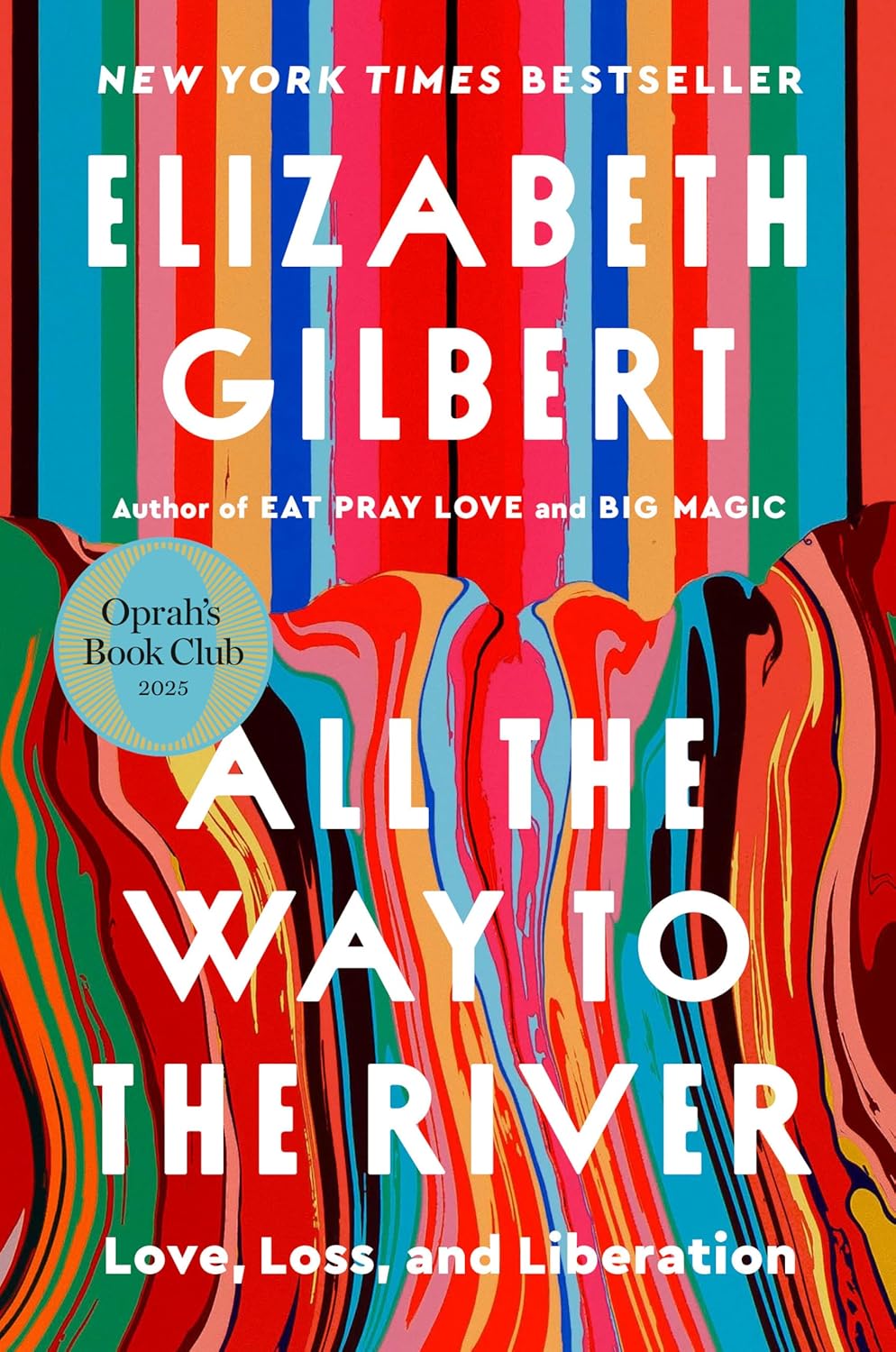
All the Way to the River: Love, Loss, and Liberation
Elizabeth Gilbert
Riverhead Books, 2025, 400 pages
$35.00
Reviewed by Cassandra Langer
Elizabeth Gilbert, global sweetheart of women’s magazines, TED Talks royalty, and patron saint of anyone who ever wanted to eat their way around the world, has returned with a new memoir. This one is not about finding love in Bali or mastering yoga in an Indian ashram. No, All the Way to the River is Gilbert’s full-throttle plunge into grief, queerness, addiction, mystical visitations, and the kind of emotional mayhem most of us would only confess under anesthesia.
This is not a beach read. It’s a fasten-your-seatbelts-for-a-bumpy-ride-and-maybe-book-an-appointment-with-your-therapist-after-you-finish book.
Gilbert begins with a visitation from her late partner, Rayya Elias, whose spirit seems far too opinionated to stay politely deceased. People may roll their eyes at such things, but I’m not one of them.
After my beloved dog died, I returned home to an apartment so empty it echoed. I clutched her leash like a Victorian widow and wept into her water bowl. The next morning, a disgusting, toilet-water-soaked tennis ball—yes, that one, the one I threw out—appeared on my pillow. I didn’t scream. I thought, “Oh. So that’s how it’s going to be.”
So when Gilbert talks about Rayya dropping in from the great beyond, I’m right there with her. Some of us get messages from the dead. Some get comfort. Some get ghostly tennis balls.
Gilbert’s memoir is a wild mosaic, equal parts emotional demolition derby, spiritual travelogue, queer romance, and New Age interpretive dance. At moments, it feels like The Killing of Sister George wandered off, took mushrooms, and started reading Jean Genet.
She tells us right away: “I couldn’t believe I had sunk this low.” And to her credit, she means it every time. Gilbert dives from one high to the next: emotional, spiritual, narcotic, romantic. It’s like watching a very literary pinball machine: bing, new obsession. Bong, new crisis. Ding, new mystical revelation.
And somehow it’s both maddening and completely relatable. Who hasn’t, in a moment of loneliness, reached for something questionable? Maybe not a controlled substance or a penthouse rental, but we’ve all been there in spirit.
At the heart of the book is Gilbert’s care for Rayya as she dies from pancreatic and liver cancer, a journey as tender as it is terrifying. Gilbert is loving, terrified, overwhelmed, generous, impulsive, broke, extravagant, sober, not sober, heartbroken, hopeful, and hysterically human. Sometimes all in the same paragraph.
Eventually, she lands in a twelve-step program, declaring that after contemplating murder, suicide, or possibly both on alternate Thursdays, it was time to “ask for help.” A sensible conclusion, really.
She writes with naked honesty, sometimes too naked, the way someone overshares in a group therapy session, and you suddenly find yourself rooting for them against your will.
This memoir is not for everyone, especially not for highly critical readers, but co-dependent lesbians will lap it up. It is for:
● people who fall in love like they’re leaping off cliffs
● people who grieve like the world is ending (because it is, for them)
● people who can’t resist one more emotional thrill ride
● people who have ever seen a sign from the dead and want a near-death experience
Others may find the book unbearable, too intense, too mystical, or too steeped in the spiritual equivalent of rainbow smoothies.
But Gilbert herself? She is a tangled, addictive, self-aware mess. And she knows it.
All the Way to the River is not tidy or transcendent in the way Gilbert’s earlier memoirs were. But it is deeply human, fiercely loving, unintentionally funny at times, and full of the chaos that happens when you’re trying to hold on to the living while being haunted—spiritually, emotionally, sometimes literally—by the dead.
By the last page, you may still not understand Elizabeth Gilbert, but you will absolutely appreciate her.
After all, most of us are just one heartbreak, one impulse purchase, or one ghostly tennis ball away from the river ourselves.
Cassandra Langer lives in Jackson Heights, New York, where she writes and reviews books, and makes art under the watchful eye of a very demanding calico. She is a contributor to The Gay & Lesbian Review, Ms. Magazine, Sinister Wisdom, and is the author of Romaine Brooks: A Life. She is currently completing her second volume of a two-book anti-conversion memoir, consisting of Erase Her: A Survivor’s Story (available at Amazon in Kindle and soft cover) and working on The Other Side Of The Rainbow: Growing Through Trauma. https://theothersideoftherainbow.org/